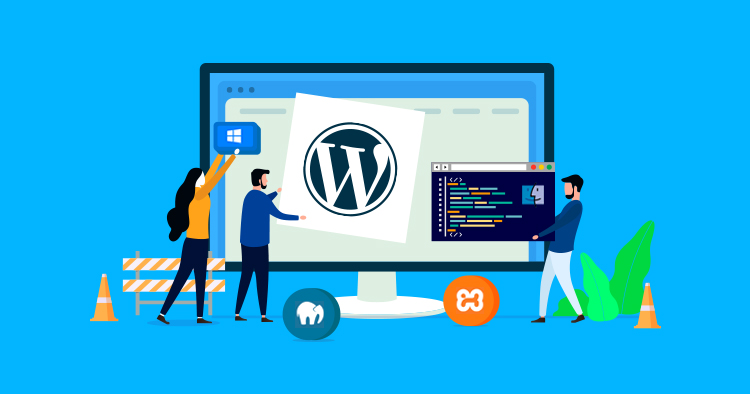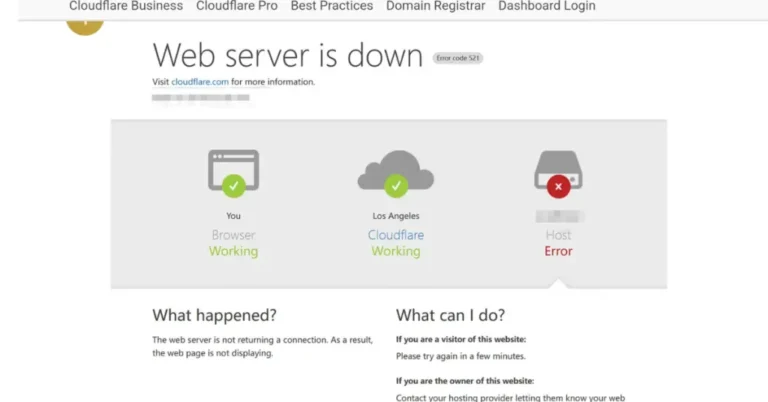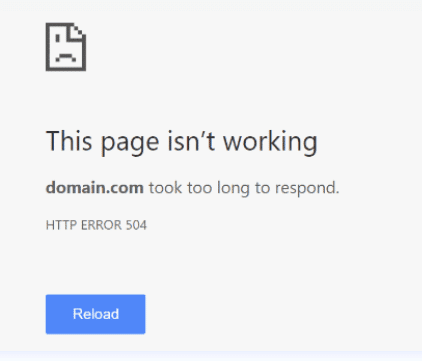WordPress Hooks are a fundamental aspect of customizing and extending the functionality of your WordPress website.
In this article, we will delve into the basics of WordPress Hooks, including the terminology surrounding Hooks, Actions, and Filters.
We will explore the different types of Hooks, such as Actions and Filters, and how they work within the WordPress infrastructure.
Learn how to utilize Actions and Filters effectively, as well as advanced techniques for creating custom Hooks and debugging them.
Join us as we master WordPress Hooks with PHP!
Key Takeaways:
- Understand the basics of WordPress hooks, including terminology like ‘hooks’, ‘actions’, and ‘filters’.
- Learn how to implement actions and filters, and how to assign priorities to actions in order to control their execution.
- Discover advanced techniques such as creating custom hooks and debugging/testing hooks to further enhance the functionality of WordPress hooks.
Introduction to WordPress Hooks
WordPress Hooks play a crucial role in extending the functionality of WordPress websites by allowing developers to modify or add custom code to various parts of the WordPress core.
These hooks serve as entry points that enable developers to interact with the WordPress core, themes, plugins, and child themes. Through the use of action and filter hooks, developers can insert their PHP functions at specific predefined moments in the execution process or modify the output of existing functions. This flexibility enables developers to make targeted changes without directly editing the core files, ensuring the maintenance and upgradability of WordPress websites. By leveraging hooks, developers can seamlessly customize the appearance, behavior, and functionality of WordPress sites to suit specific requirements.
Understanding the Basics
Understanding the basics of WordPress Hooks involves grasping the fundamental concept of how these hooks interact with the WordPress Core, plugins, and child themes.
WordPress Hooks play a crucial role in WordPress development by allowing developers to ‘hook’ into various points in the system to modify or extend its functionality. There are two main types of hooks: action hooks and filter hooks. Action hooks enable the execution of custom code at specific times, such as when a post is published or a theme is activated. On the other hand, filter hooks provide a way to modify data before it is displayed, offering a high level of customization.
Themes in WordPress are heavily reliant on hooks for customization. Developers can use hooks to add or remove elements from the theme, change styling, or alter functionality without directly modifying the theme files. This approach ensures that theme updates can be applied without losing customizations.
Terminology: Hooks, Actions, and Filters
In the context of WordPress development, understanding the distinctions between hooks, actions, and filters is vital for effective customization and functionality enhancement.
WordPress Hooks serve as connection points that allow developers to modify or add code to WordPress core functionality without altering the original source code. These Hooks are categorized into two main types: Actions and Filters.
- Actions are events triggered at specific points in the execution of WordPress, enabling developers to insert additional functionality like sending an email after a post is published.
- On the other hand, Filters allow modification of data before it is displayed or saved, such as changing the content of a post before it is shown on the screen.
For instance, a common implementation of Actions is ‘wp_enqueue_scripts,’ which is used to enqueue scripts and styles in WordPress themes or plugins. On the other hand, a typical use of Filters is ‘the_content,’ which is applied to modify the content of a post before it is displayed to the user.
Overview of WordPress Hooks
The Overview of WordPress Hooks provides a comprehensive look at how hooks, actions, and filters drive the extensibility and flexibility of WordPress Core and plugins.
WordPress hooks act as trigger points within the WordPress architecture that allow developers to ‘hook into’ various parts of the execution process to modify or extend functionality. These hooks come in two types: actions and filters.
Actions allow developers to execute additional code at specific points in the WordPress workflow, enabling them to add new features or alter existing ones. Filters, on the other hand, provide a way to modify data before it is displayed or saved.
Together, actions and filters contribute to the dynamic nature of WordPress by allowing developers to customize and enhance the platform in countless ways.
Definition and Purpose
The definition and purpose of WordPress Hooks lie in their ability to serve as entry points for developers to modify or enhance the functionality of WordPress websites during the development process.
WordPress Hooks, in essence, are triggers or callback functions that allow developers to insert, modify, or remove code in different parts of a WordPress site without directly editing the core files.
These hooks are categorized into two types:
- Action Hooks enable developers to run custom code at specific points in the WordPress execution process.
- Filter Hooks provide a way to modify data or content before it is displayed on the site.
By leveraging WordPress Hooks, developers can create themes, plugins, and custom functionalities that seamlessly connect with the WordPress ecosystem, offering a high degree of flexibility and customization.
Types of Hooks: Actions and Filters
WordPress Hooks encompass two primary types: Actions and Filters, with Actions allowing developers to execute custom code at specific points and Filters enabling modification of data before it is displayed.
Actions in WordPress are essentially triggers that allow developers to inject their own functions into specific points of the WordPress system, such as when a post is published or a user is logged in. This allows for customization and adding new functionality to the platform.
On the other hand, Filters in WordPress provide a way to modify or manipulate data before it is shown to the user. For example, a filter can be used to change the content of a post before it is displayed or to modify the attributes of an image.
How WordPress Hooks Work
Understanding how WordPress Hooks work involves diving into the process of how action and filter hooks interact with PHP code to integrate custom functionalities seamlessly within the WordPress infrastructure.
WordPress Hooks serve as connection points within the WordPress system that allow developers to execute custom actions or modify content output without directly altering core files. When a WordPress page loads, these hooks trigger specific functions or pieces of code attached to them, influencing the behavior of the site.
With action hooks, developers can add new functionalities at specified points in the execution process, while filter hooks enable data modification before it is displayed. This mechanism provides a flexible framework for extending WordPress’s capabilities through code customization, making it a powerful tool for dynamic content manipulation.
Process and Execution
The process and execution of WordPress Hooks involve a systematic flow wherein developers define actions and filters to be executed at specific points during the integration process.
Before diving into the technicalities, it is essential to understand that WordPress Hooks play a vital role in extending the functionality of a WordPress website. First and foremost, developers define these hooks by creating functions that contain specific tasks to be executed. These functions are then attached to specific hooks called ‘actions’ or ‘filters’ based on when they need to be executed.
Once the hooks are defined, WordPress handles the integration process seamlessly. As the WordPress core performs various actions during its lifecycle, the defined hooks trigger the associated functions, allowing developers to customize and modify the platform’s behavior.
Integration into WordPress Infrastructure
WordPress Hooks seamlessly integrate into the WordPress infrastructure, enabling developers to modify core functionalities, apply customizations, and execute callbacks for enhanced website performance.
These hooks serve as entry points within the WordPress codebase, allowing developers to interact with different functionalities at specific points during the execution of a program. Actions hooks enable developers to add their custom functionality, while Filters hooks enable them to modify existing data or content. By leveraging hooks, developers can create plugins that extend WordPress functionalities, such as adding new features, changing display aspects, or enhancing user experience.
Utilizing Actions in WordPress Hooks
Utilizing Actions in WordPress Hooks involves implementing custom functions that execute at specific trigger points within the WordPress environment, with the ability to assign priorities to control their execution order.
By creating custom functions tied to specific triggers, developers can enhance the functionality and interactivity of their WordPress websites. Assigning priorities to these actions is crucial for ensuring tasks are executed in the desired order, especially in scenarios where multiple functions are hooked to the same action. This prioritization allows developers to manage dependencies and streamline processes efficiently. Understanding the sequence in which actions are executed helps in optimizing performance and ensuring the desired outcomes. In essence, the careful management of action priorities enables developers to orchestrate complex operations seamlessly.
Implementing Action Hooks
Implementing Action Hooks in WordPress entails embedding custom code within themes or plugins to trigger specific actions, thereby enhancing the functionality and appearance of WordPress websites.
To implement action hooks effectively in WordPress, developers need to identify the specific points in the theme or plugin where they want custom actions to take place. These action hooks act as triggers for executing custom code at specified locations within the WordPress core. By utilizing action hooks, developers can easily modify or extend the default functionality of themes and plugins without directly editing core files, ensuring seamless future updates and compatibility.
Assigning Priorities to Actions
Assigning priorities to actions in WordPress Hooks allows developers to control the sequence in which multiple functions tied to a particular action are executed, ensuring precise order and desired outcomes.
By setting priorities, developers can dictate whether their custom functions should run before or after core functionalities or other plugin actions. This ensures that the site’s behavior aligns with their specific requirements. Utilizing priority numbers, developers can easily manage the execution flow and prevent conflicts between various functions.
One crucial aspect of prioritizing actions is understanding the default priority setup in WordPress. Lower numbers indicate higher priority, with zero being the highest. This default system helps developers grasp how WordPress processes functions and aids in setting appropriate priorities for seamless execution.
Leveraging Filters in WordPress Hooks
Leveraging Filters in WordPress Hooks enables developers to apply custom modifications to data output, providing a high degree of customization and flexibility in altering content appearance and functionality.
Filters play a crucial role in WordPress development, allowing programmers to manipulate how data is displayed on websites. By hooking into specific points within the code, developers can intercept and modify the information before it gets rendered on the screen. This process involves using the apply_filters function, which is a core mechanism in WordPress that enables developers to specify the content they want to modify and pass it through various filter hooks. These hooks act as gateways where developers can intercept the data and make necessary alterations to suit their requirements.
Applying Filter Hooks
Applying Filter Hooks in WordPress involves utilizing apply_filters function to intercept data, make modifications, and return the altered content to achieve tailored output according to specific customization requirements.
Developers can leverage filter hooks in WordPress by adding custom functions to the apply_filters function with a unique hook name. This allows them to manipulate various types of data, such as text, images, or even metadata, before the final output is rendered on the website. Proficient use of filter hooks enables developers to dynamically alter the content without directly modifying the core files, ensuring easy maintenance and compatibility with future updates.
For instance, a common scenario involves modifying the excerpt length of a post displayed on a blog page. By creating a custom function that hooks into the ‘excerpt_length’ filter, developers can precisely control the number of words in the excerpt, providing a streamlined and consistent reading experience for site visitors.
Customization and Modification with Filters
Customization and Modification with Filters in WordPress Hooks enable developers to fine-tune and adjust various aspects of content presentation, layout, and functionality to meet specific design and user experience requirements.
Filters, as a crucial aspect of WordPress development, provide a flexible mechanism for making targeted alterations to the output generated by themes and plugins. They act as gatekeepers that intercept data and allow developers to apply modifications before it is displayed on the website. This capability enables developers to dynamically alter content without directly editing core files, ensuring maintainability and compatibility with future updates. By leveraging filters, developers can override default behavior, introduce custom functionality, and tailor the site’s appearance to align perfectly with the envisioned design.
Advanced Techniques with WordPress Hooks
Exploring Advanced Techniques with WordPress Hooks delves into sophisticated methods of creating custom hooks, debugging hook interactions, and rigorously testing hook implementations for robust performance.
Creating custom hooks in WordPress involves defining specific actions or filters within your theme or plugins to allow flexible customization and extendibility.
When encountering issues with hooks, employing effective debugging techniques is crucial. Utilizing tools like Xdebug or WP_Debug to trace the flow of hook callbacks and pinpoint errors can expedite the troubleshooting process.
Thorough testing strategies play a vital role in ensuring that hooks function reliably across various scenarios and environments. Automated testing frameworks such as PHPUnit can streamline the validation of hook behavior and performance optimizations.
Creating Custom Hooks
Creating Custom Hooks in WordPress involves defining unique hook points, associating them with specific functions, and integrating them into theme or plugin development to extend functionality and customization options.
Defining custom hooks in WordPress provides a powerful way to modify the behavior of your website without altering core files. By strategically placing hooks, developers can inject additional code at specific junctures in the execution process, allowing for seamless integration of custom features.
- When defining a custom hook, you need to choose a unique identifier and the location where it will be implemented within your theme or plugin code.
- Linking the custom hook to a specific function ensures that the designated code is executed when the hook is triggered, providing the desired functionality.
- Integrating these hooks into your WordPress development enables you to create modular and flexible solutions that cater to your specific project requirements.
Debugging and Testing Hooks
Debugging and Testing Hooks in WordPress involves employing systematic approaches to identify and resolve hook-related issues, ensuring optimal performance and seamless integration of custom functionalities.
One effective strategy is to use testing environments to isolate hooks and replicate scenarios where issues occur. By strategically placing var_dump() or error_log() statements in the code, developers can track the flow and behavior of hooks at different stages. Leveraging tools like Xdebug for step-by-step debugging can offer deep insights into hook interactions and variable values. Performing unit tests for individual hooks and end-to-end integration tests for hook chains can help validate the functionality and compatibility of custom hooks within the WordPress ecosystem.
Frequently Asked Questions
What are WordPress Hooks?
WordPress Hooks are functions that allow developers to modify or add functionality to WordPress websites. They are categorized as actions or filters and are used to perform specific tasks at specific times during the execution of WordPress code.
What is the difference between Actions and Filters?
Actions and filters are both types of WordPress Hooks, but they serve different purposes. Actions are used to add new functionality to WordPress, such as adding a new post or updating a user profile. Filters, on the other hand, are used to modify existing data, such as changing the title of a post or altering the output of a function.
How do I use Actions and Filters in WordPress?
To use Actions and Filters in WordPress, you need to write custom PHP code that calls the specific action or filter function. This code can be added to your theme’s functions.php file or in a separate plugin. You can also use existing WordPress Hooks from themes or plugins to modify or add functionality to your website.
What is the importance of mastering WordPress Hooks?
Mastering WordPress Hooks allows developers to customize and extend the functionality of WordPress websites without directly editing the core code. This ensures that your modifications are not lost when WordPress updates are installed. Additionally, Hooks allow for more flexible and efficient development, as they can be easily removed or modified without affecting other parts of your website.
What are some common use cases for WordPress Hooks?
Some common use cases for WordPress Hooks include adding custom fields to post types, modifying the content or layout of a page, and creating custom user roles and capabilities. Hooks can also be used to integrate third-party plugins or to customize the behavior of existing WordPress functions.
Can I use WordPress Hooks to modify the appearance of my website?
No, WordPress Hooks are used for adding or modifying functionality, not for changing the appearance of your website. For design changes, you can use themes, child themes, or custom CSS. However, Hooks can be used to modify the output of certain elements, such as changing the number of posts displayed on a page or adding additional styling options to a theme’s customization page.




